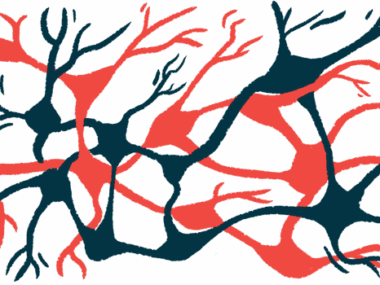Energy metabolism found impaired in nerve support cells in Rett: Study
Scientists study how Rett affects human astrocytes derived from stem cells
Written by |

Gene mutations that cause Rett syndrome affect the function of mitochondria, the cell’s energy producers, in human astrocytes, a type of cell that supports nerve cell function, according to a new study.
In fact, when healthy nerve cells took up mitochondria isolated from Rett astrocytes, their function was disrupted.
“This shows that in order to understand Rett Syndrome, we need to look beyond what’s happening in neurons to other cell types,” Danielle Tomasello, PhD, the study’s first author and researcher at the Whitehead Institute for Biomedical Research, in Massachusetts, said in an institute news story.
Details of the discovery were published in Scientific Reports, in the study “Mitochondrial dysfunction and increased reactive oxygen species production in MECP2 mutant astrocytes and their impact on neurons.”
About 90%-95% of Rett syndrome cases are caused by mutations that impair the function of MeCP2, a protein that regulates the activity of other genes by switching them on or off. Without MeCP2 function, the growth and connectivity of neurons (nerve cells) is impaired, resulting in a range of neurological symptoms.
Astrocytes provide structural, molecular support for neurons
Astrocytes are multifunctional cells found in the brain and spinal cord. These cells provide structural and molecular support for neurons, which is essential for proper neuronal development and growth.
In mouse models, the loss of MeCP2 in astrocytes alone caused Rett-related features, and neuronal defects and symptoms were lessened by rescuing MeCP2 production in astrocytes. Moreover, when grown alongside dysfunctional astrocytes, the function of healthy neurons was disrupted.
In the new study, scientists investigated molecular changes in human astrocytes derived from stem cells, with and without MeCP2, and their effect on neuronal function. Cells were grown in 2D cultures and 3D organoids, which are mini brain-like tissues that contain multiple cell types that mimic brain anatomy.
“By considering Rett Syndrome from a different perspective, this project expands our understanding of a multifaceted and thus far incurable disease,” said Rudolf Jaenisch, PhD, study senior author and founding member of the Whitehead Institute, who is also a professor of biology at the Massachusetts Institute of Technology.
The team focused on mitochondria, structures within cells that generate energy and precursor molecules for the building blocks of cells. Studies suggest mitochondrial defects may contribute to some of the cellular defects observed in Rett patients.
Mitochondria from Rett organoids found to be significantly smaller
Under the microscope, mitochondria from Rett organoids were significantly smaller in total area and length compared with mitochondria from control organoids. These differences were particularly pronounced in astrocytes versus neurons.
In Rett astrocytes, the molecular processes that produce energy in mitochondria were reduced, and key energy-related proteins were altered compared with controls. Additionally, these astrocytes showed increased levels of amino acids, the building blocks of proteins, which dropped in response to increased energy demands.
“We propose [Rett astrocytes] accommodate prolonged stress from changes in energy metabolism and demand by [the breakdown] of amino acids,” the researchers wrote.
In other experiments, the activity of some mitochondrial genes found in astrocytes’ nuclei was increased over neurons. The researchers noted this may be a compensatory mechanism by which genes are boosted in response to mitochondrial dysfunction. There was also an increase in reactive oxygen species in Rett astrocytes, which are toxic byproducts of mitochondrial metabolism.
One way astrocytes support the energy needs of neurons is by supplying mitochondria. The team discovered that neurons take up impaired mitochondria isolated from Rett astrocytes at a higher rate than mitochondria from healthy astrocytes.
When both healthy and Rett neurons were incubated with mitochondria from Rett astrocytes, they took up the dysfunctional mitochondria in large numbers, potentially fusing with neuron mitochondria. Healthy neurons that took up dysfunctional astrocytes showed increased excitability and generated higher levels of reactive oxygen species.
Finally, supplying affected astrocytes with healthy mitochondria enhanced overall mitochondria function similar to a molecule that scavenges and reduces reactive oxygen species.
“We define that human [Rett astrocytes] exhibit altered energy metabolism and severe mitochondrial dysfunction,” the scientists wrote. “We propose the identification of dysfunctional mitochondria in human [Rett astrocytes] is a significant finding based on the impact of transferred mitochondria to neuronal health and function.”







